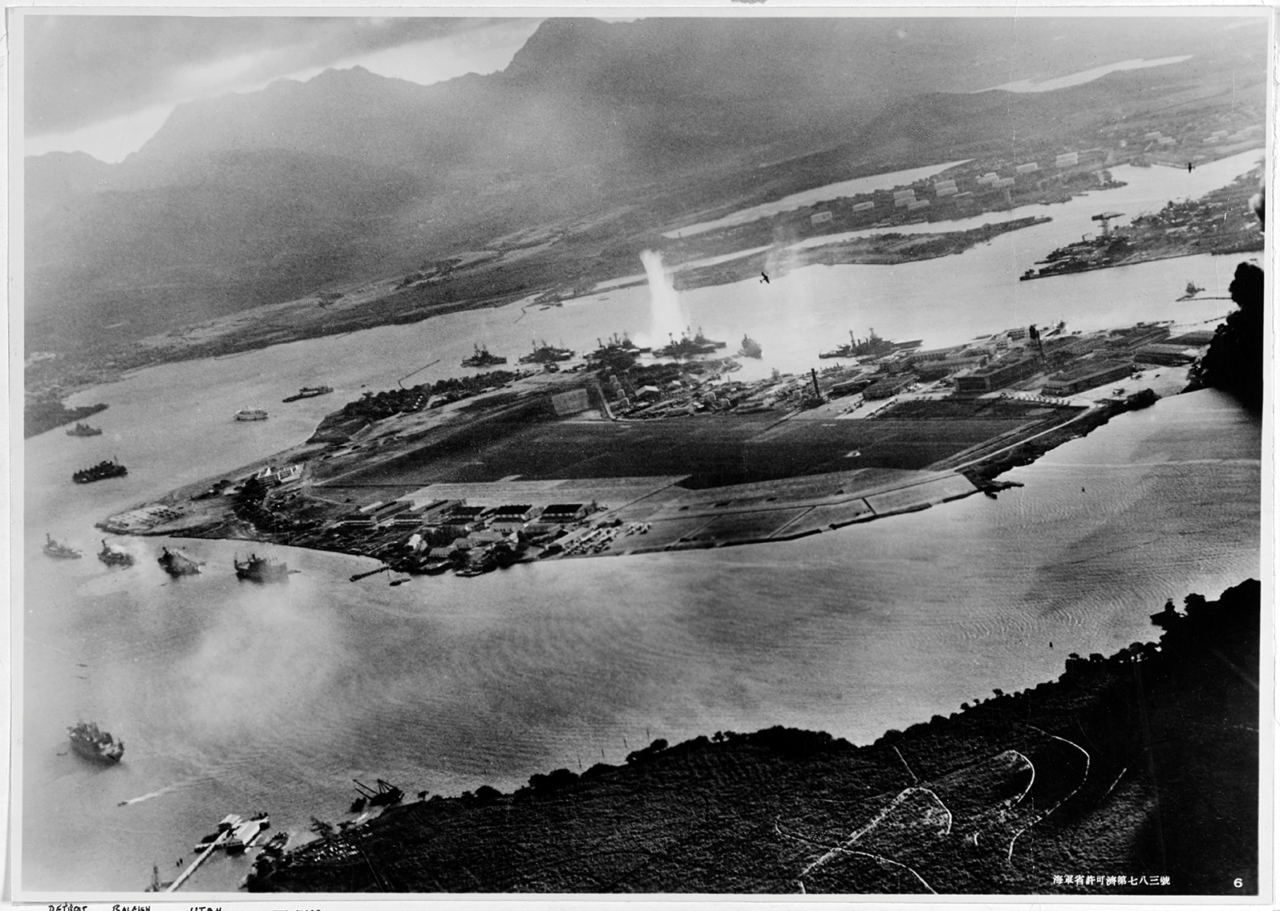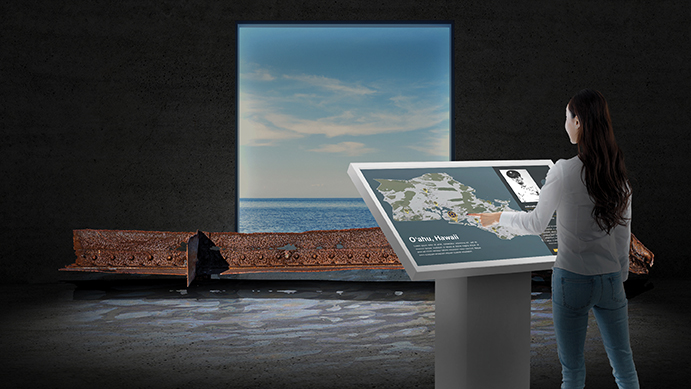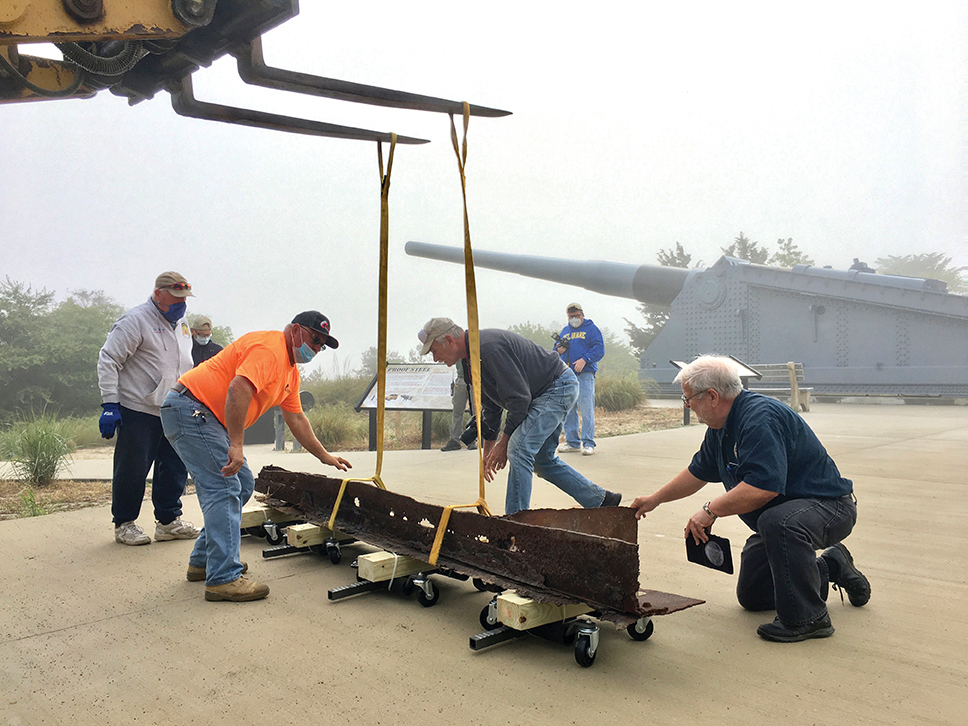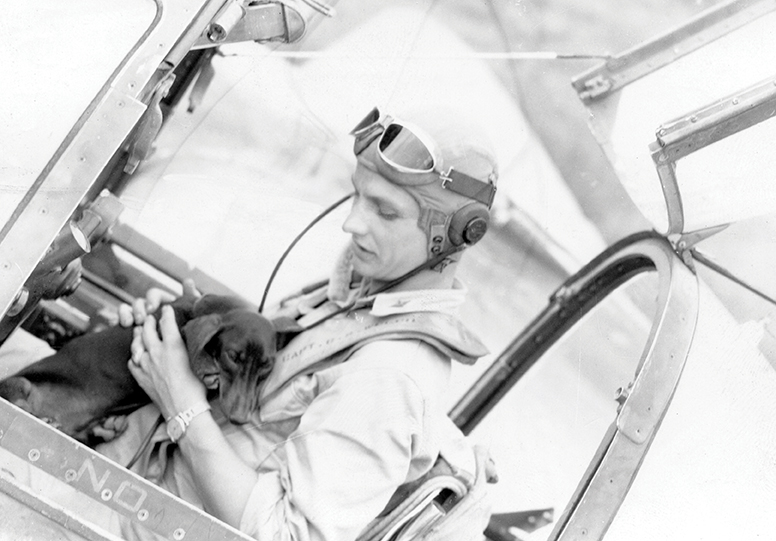In honor of Delaware’s forgotten heroes of Pearl Harbor, Fort Miles unveils its Oil Still Bleeds exhibit, and in doing so, brings the stories of 23 first state service members stationed on the island, as well as those of local female and African American WWII soldiers, back to life
Story by Heidi Nasstrom Evans | Photography courtesy Horizon Philanthropic Service
Fort Miles was built as a coastal defense against German naval attacks during the early days of World War II. Over the past 20 years, the Fort Miles Historical Association (FMHA) and Delaware State Parks has restored Battery 519, turning it into a museum, with the mission of telling the stories of Delawareans who have served in the U.S. Armed Forces.
The Oil Still Bleeds exhibit celebrates the FMHA’s recent acquisition of a 650-lb relic from the USS Arizona, sunk during the Japanese attack on Pearl Harbor on December 7, 1941 — the event that brought the U.S. into WWII. The addition of the Arizona relic to the museum creates a “bookend” to the collection’s USS Missouri 16-inch gun barrel, under which the documents of surrender were signed with Japan, ending WWII. This makes Fort Miles one of few museums with significant artifacts from the very beginning and end of WWII.


SOLEMN TRIBUTE Among the many moving aspects of Oil Still Bleeds is a part of the USS Arizona, which will appear to be hovering.

With its current production of the Oil Still Bleeds exhibit, Fort Miles is poised to kick off a major capital campaign to elevate itself as a world-class museum.
The exhibition space in the Fort’s North Gun Room has been designed to evoke a sense of reverence and solemnity for the sacrifices made by U.S. servicemen at Pearl Harbor and during WWII. In all, 1,177 men died and are entombed within the hull of the Arizona, which is both a war grave and a national memorial. Within the exhibit, the Arizona relic is elevated and lit to appear to be hovering. Period footage of the attack and current-day underwater footage of the sunken wreck of the Arizona is projected. The space is filled with the underwater sounds of the lagoon.
Flanking the relic are two large touchscreen maps of the island of Oahu, Hawaii, where Pearl Harbor is located. Touching different areas of the maps brings to life the stories of 23 Delawareans stationed on the island on the day of the attack. Period photos and archives allow visitors to experience the event through the eyes of these heroes and learn where they went on to serve in WWII.

DELAWARE WAR HERO Wilmington’s George Welch was the first American soldier to be awarded the Distinguished Service Cross in World War II after shooting down four of the 29 Japanese planes shot down while defending Pearl Harbor.
The map also tells the stories of women and people of color from Delaware during WWII. Previously held back by institutionalized sexism and racism, new opportunities became available during the war when jobs traditionally held by white men, now fighting on the front lines, needed to be filled. Women went from auxiliary positions to having full military benefits, and men of color saw the formation of an officer’s training program.
Wall panels chronicle the historical context of USS Arizona relic: the Japanese attack on Pearl Harbor; the battleships of Pearl Harbor; activities back home at Fort Miles during WWII; and challenges faced by Japanese Americans who tried to relocate to Sussex County after internment.
Following a brief preview opening, the exhibit will be on public view through Pearl Harbor Day, December 7, 2022. More than 30,000 visitors are expected. The exhibit will be accompanied by a host of events, many to benefit veterans’ organizations, and include a meet-and-greet for families of the Delaware heroes featured in the exhibit, a “Stories of Diversity” lecture series in early 2022 and a day of service performed by local school children to benefit Delaware’s homeless veterans. Public and private tours of the exhibit will be offered. CS
